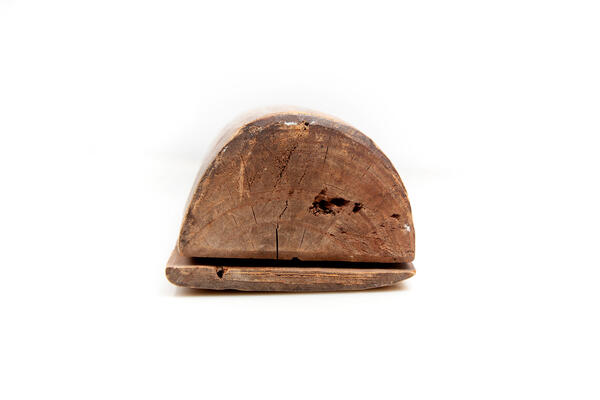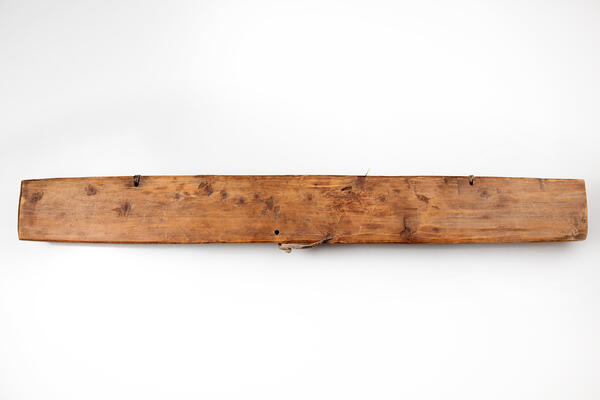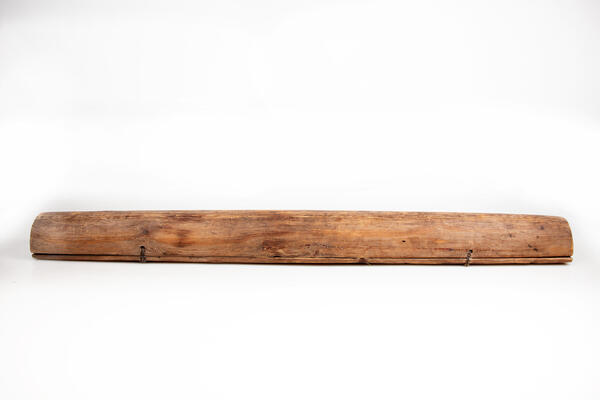Reindeer husbandry, fishing and hunting were and remain the main occupations of the Forest Nenets. They hunt wild deer, Arctic fox, red fox, hare, ermine, squirrel, beaver and marten. In the past, Nenets hunters could hunt wolverine, white and brown bear, and wolf. The Nenets hunt fur-bearing animals with the help of wooden traps, iron traps and nooses. The Nenets have also hunted birds for a long time: white partridges and geese during the molting period, when they cannot fly normally, as well as grouse.
Like all the peoples of the North, the Forest Nenets made hunting gear from what was available in the surrounding environment. The main gear includes homemade bows and arrows, traps and knives. Hunters often go fishing on skis and can take a hand sled to carry the prey.
There are several types of Nenets arrows in terms of tips and fletching. Arrowheads were made of stone, bone and iron; they could be hollow and have a tang for fitting into the shaft. In the first case, a sharp arrowhead with a socket was put onto the shaft, and in the second, an awl-shaped arrowhead was inserted into the shaft and wrapped with tendon threads and a thin strip of birch bark.
The peoples of the North had special hunting arrowheads for different types of prey. Blunt bone and wooden ones were used for hunting fur-bearing animals, so as not to spoil the hide. Forked and “whistling” arrows, which were called “whistler-arrow” and “hawk-arrow”, were used for hunting waterfowl: a whistle similar to the sound of a hawk’s flight frightened birds and lifted them into the air. Arrows could be with and without fletching — the nature of their flight depended on it. For strength, the fletching was smeared with glue and wrapped with horsehair or thread.
Quivers were designed to carry a stock of arrows over long distances during hunting or traveling. They were also used by hunters who especially took care of arrows and could not allow them to break during hunting. The quiver from the collection of the Purovsky Museum is made of wood. It has the shape of a half-cylinder, and the lid is fastened with leather straps. The Nenets carried such quivers over their shoulders, and put them in a boat or a sled.
Like all the peoples of the North, the Forest Nenets made hunting gear from what was available in the surrounding environment. The main gear includes homemade bows and arrows, traps and knives. Hunters often go fishing on skis and can take a hand sled to carry the prey.
There are several types of Nenets arrows in terms of tips and fletching. Arrowheads were made of stone, bone and iron; they could be hollow and have a tang for fitting into the shaft. In the first case, a sharp arrowhead with a socket was put onto the shaft, and in the second, an awl-shaped arrowhead was inserted into the shaft and wrapped with tendon threads and a thin strip of birch bark.
The peoples of the North had special hunting arrowheads for different types of prey. Blunt bone and wooden ones were used for hunting fur-bearing animals, so as not to spoil the hide. Forked and “whistling” arrows, which were called “whistler-arrow” and “hawk-arrow”, were used for hunting waterfowl: a whistle similar to the sound of a hawk’s flight frightened birds and lifted them into the air. Arrows could be with and without fletching — the nature of their flight depended on it. For strength, the fletching was smeared with glue and wrapped with horsehair or thread.
Quivers were designed to carry a stock of arrows over long distances during hunting or traveling. They were also used by hunters who especially took care of arrows and could not allow them to break during hunting. The quiver from the collection of the Purovsky Museum is made of wood. It has the shape of a half-cylinder, and the lid is fastened with leather straps. The Nenets carried such quivers over their shoulders, and put them in a boat or a sled.





